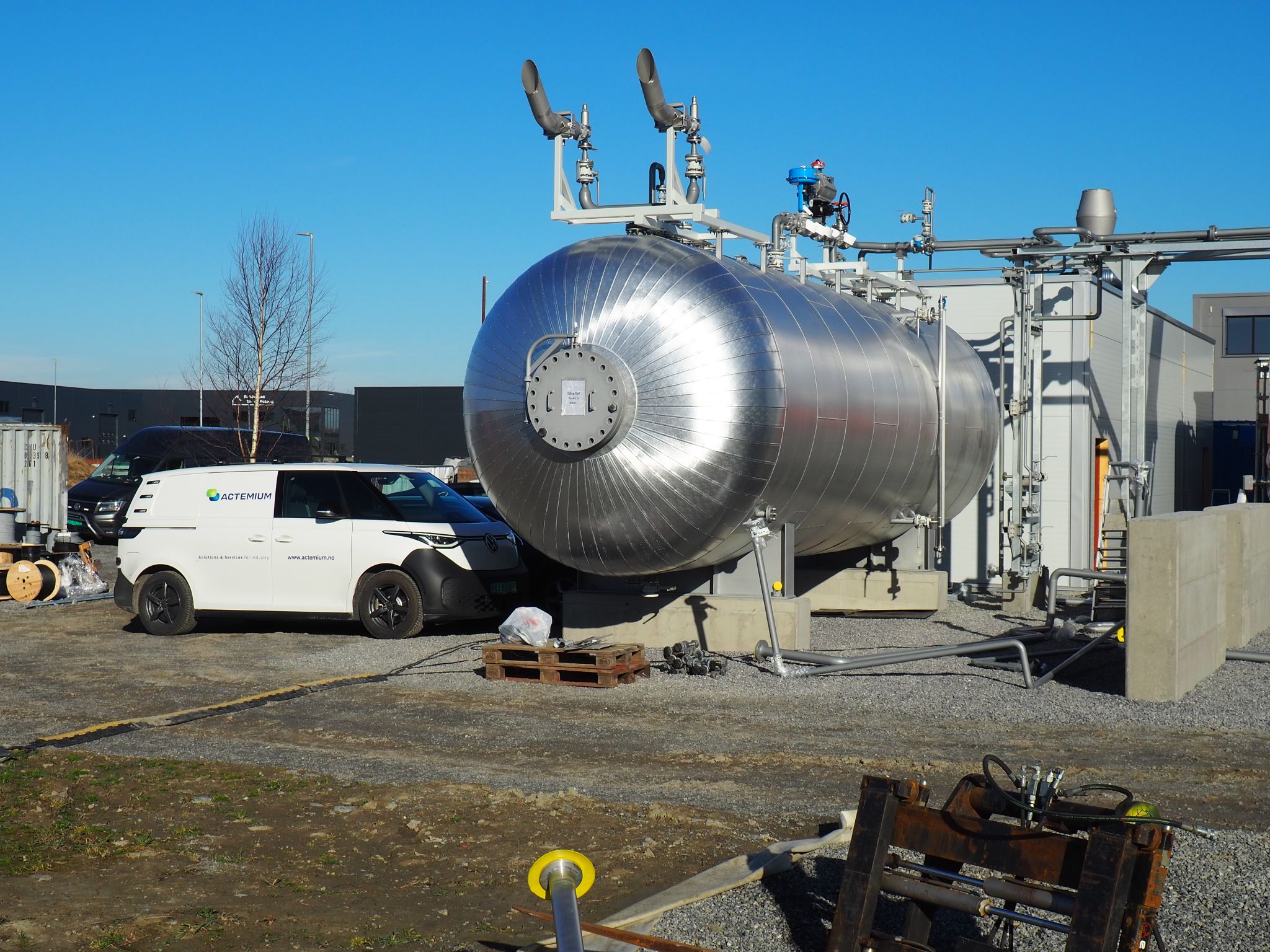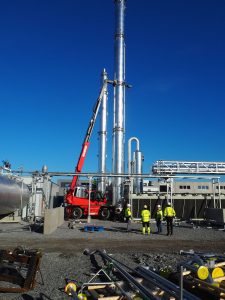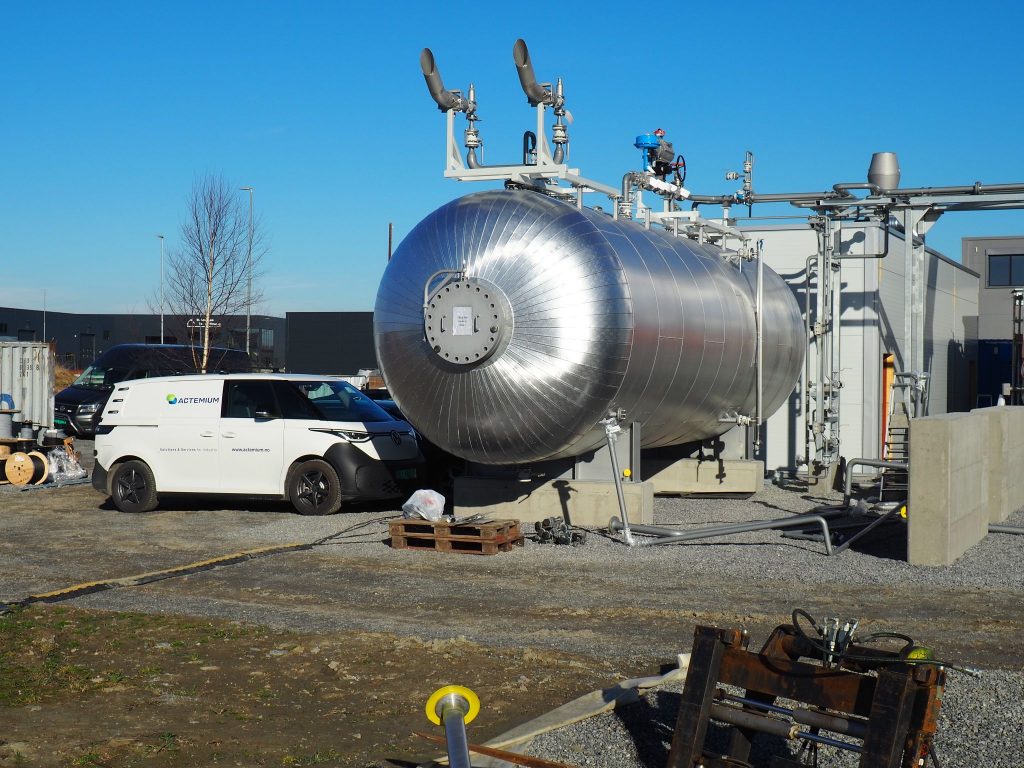Capturing Carbon, Creating Value: Actemium and Carbon Centric Lead a Greener Future

Actemium Norway has teamed up with an innovative startup called Carbon Centric to build a modular carbon capture system that will pull pure CO2 out of the exhaust of a waste-incineration plant in Rakkestad, Norway.
Actemium workers assembled electrical and instrument installations for the new system in containers, which were then transported to the site. Carbon Centric’s small, modular design is relatively light and inexpensive and can capture 10,000 tonnes of CO2 per year. It is in the commissioning stages and will start operating full time in July 2025.
The system employs Shell’s CANSOLV CO2 Capture System, which uses an amine-based solvent that acts like a magnet for CO2 molecules in the incinerator’s exhaust.
When the smoke passes through this liquid, the CO2 sticks to it while other gases continue through the exhaust. The CO2 -filled liquid is then heated, which releases the pure CO2 for storage underground or other uses. The cleaned liquid can be reused again and again to capture more CO2.
More modular installations planned
Storage options are limited in the area, so Carbon Centric is producing pure liquid CO2 for industrial use. All of the output is contracted for purchased by Linde Gas, the leading global distributor of industrial gasses. Recovered CO2 has a number of applications, from preparing fizzy drinks to curing concrete and even the production of synthetic fuels.
Carbon Centric’s modular plants are designed to pull CO2 directly from the exhaust gasses at incineration plants like the one in Rakkestad. The young startup, spun out of Østfold Energi, which operates the incineration plant in Rakkestad, already has plans to build 3 more systems, one in Iceland and two in Norway.
About half the CO2 from waste and incineration plants originates from biogenic masses, that is to say organic and renewable material. This kind of CO2 is more sustainable than CO2 from fossil sources.
Østfold Enregi’s household waste incineration plant complies with strict requirements for safe and environmentally sound incineration. The carbon-centric addition to this plant will make the incineration facility even more energy efficient and reduce greenhouse gas emissions by cleaning the exhaust of CO2 and other impurities.

Actemium’s commitment to the environment
Actemium is fully engaged in reducing industry’s carbon footprint, whether it be by helping companies operate more efficiently from the beginning or creating pathways toward the circular economy.
Transforming CO2 from a harmful byproduct to a re-useable co-product is one of many examples of this commitment.
Supply chain issues during the Covid-19 crisis caused CO2 shortages so Actemium Belgium stepped up to support a CCU (Carbon Capture and Utilisation) project at a chemical factory where CO2 was captured as a by-product in the ethylene oxide production process. The process, which has captured more than 1 million tonnes of CO2, also purifies it and turns it into liquid for easy transportation to sites, where it is then re-used.
The carbon capture facility in Norway is relatively small at 10,000 tonnes per year, but it will be one of the world’s first full-scale carbon capture facilities at a waste-to-energy plant, and it should provide insights for future projects.
Jon-Otar Ellefsen, Director of Actemium Norway, said his team would continue to work with Carbon Centric.
Their strategy focuses on smaller, efficient plants, so it is distinct from that of the major players
Ellefsen said.

